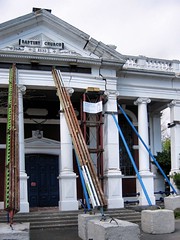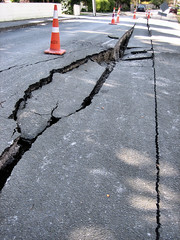
Search
Images for Canterbury Earthquake; more images...
Christchurch City
Images, eqnz.chch.2010
Helicopter Flight over Christchurch New Zealand
Latimer Square
Images, eqnz.chch.2010
Helicopter Flight over Christchurch New Zealand
Cathedral Square
Images, eqnz.chch.2010
Helicopter Flight over Christchurch New Zealand
Catholic Basilica
Images, eqnz.chch.2010
Helicopter Flight over Christchurch New Zealand
Cathedral Square
Images, eqnz.chch.2010
Helicopter Flight over Christchurch New Zealand
Cathedral Square
Images, eqnz.chch.2010
Helicopter Flight over Christchurch New Zealand
Cathedral Square
Images, eqnz.chch.2010
Helicopter Flight over Christchurch New Zealand
Christchurch Cathedral
Images, eqnz.chch.2010
Helicopter Flight over Christchurch New Zealand
Cathedral Square
Images, eqnz.chch.2010
Helicopter Flight over Christchurch New Zealand
Hagley Park
Images, eqnz.chch.2010
Helicopter Flight over Christchurch New Zealand
A System Dynamic Model of Post-Earthquake Reconstruction pathways
Research papers, University of Canterbury Library
Objectives • To develop a system dynamics model of Christchurch post-quake reconstruction process that captures all the critical dynamics influencing its pathway • To investigate the implications of current rebuild pathway • To build a reconstruction module to be integrated in MERIT (Measuring the Economics of Resilient Infrastructure Tool)
Townsend Telescope: Part Photograph 12
Images, UC QuakeStudies
A photograph of a collar from the Townsend Telescope. Part of the collar was bent out of shape during the 22 February 2011 earthquake.
Townsend Telescope: Part Photograph 13
Images, UC QuakeStudies
A photograph of a slow motion rod from the Townsend Telescope. The rod was bent out of shape during the 22 February 2011 earthquake.
Geologic and geomorphic influence on the spatial extent of lateral spreadi…
Research papers, University of Canterbury Library
Liquefaction-induced lateral spreading during earthquakes poses a significant hazard to the built environment, as observed in Christchurch during the 2010 to 2011 Canterbury Earthquake Sequence (CES). It is critical that geotechnical earthquake engineers are able to adequately predict both the spatial extent of lateral spreads and magnitudes of associated ground movements for design purposes. Published empirical and semi-empirical models for predicting lateral spread displacements have been shown to vary by a factor of <0.5 to >2 from those measured in parts of Christchurch during CES. Comprehensive post- CES lateral spreading studies have clearly indicated that the spatial distribution of the horizontal displacements and extent of lateral spreading along the Avon River in eastern Christchurch were strongly influenced by geologic, stratigraphic and topographic features.
Manchester/High Streets
Images, eqnz.chch.2010
Helicopter Flight over Christchurch New Zealand
Townsend Telescope: Part Photograph 15
Images, UC QuakeStudies
A photograph of a slow motion knob and shaft from the Townsend Telescope. The knob broke off the shaft during the 22 February 2011 earthquake.
Townsend Telescope: Part Photograph 46
Images, UC QuakeStudies
A photograph of the weight for the clock drive from the Townsend Telescope. The weight was chipped and scratched during the 22 February 2011 earthquake.
Townsend Telescope: Part Photograph 47
Images, UC QuakeStudies
A photograph of the declinator axle and counterweight from the Townsend Telescope. The axle broken off from the weight during the 22 February 2011 earthquake.
Addington Rugby Stadium
Images, eqnz.chch.2010
Helicopter Flight over Christchurch New Zealand
Townsend Telescope: Part Photograph 29
Images, UC QuakeStudies
A photograph of the lower end of the main tube of the Townsend Telescope. The tube was crushed and bent during the 22 February 2011 earthquake.
Townsend Telescope: Part Photograph 25
Images, UC QuakeStudies
A photograph of a bolt head from the Townsend Telescope. The bolt head broke off one of the telescope's bolts during the 22 February 2011 earthquake.
Townsend Telescope: Part Photograph 27
Images, UC QuakeStudies
A photograph of the lower end of the main tube of the Townsend Telescope. The tube was crushed and bent during the 22 February 2011 earthquake.
Townsend Telescope: Part Photograph 28
Images, UC QuakeStudies
A photograph of the lower end of the main tube of the Townsend Telescope. The tube was crushed and bent during the 22 February 2011 earthquake.
Townsend Telescope: Part Photograph 31
Images, UC QuakeStudies
A photograph of the lower end of the main tube of the Townsend Telescope. The tube was crushed and bent during the 22 February 2011 earthquake.
Townsend Telescope: Part Photograph 62
Images, UC QuakeStudies
A photograph of the clock drive from the Townsend Telescope. Many of the plates around the clock drive broke off during the 22 February 2011 earthquake.
Townsend Telescope: Part Photograph 30
Images, UC QuakeStudies
A photograph of the lower end of the main tube of the Townsend Telescope. The tube was crushed and bent during the 22 February 2011 earthquake.
Townsend Telescope: Part Photograph 63
Images, UC QuakeStudies
A photograph of the clock drive from the Townsend Telescope. Many of the plates around the clock drive broke off during the 22 February 2011 earthquake.
Repairing Christchurch City Council Owned Retaining Walls Damaged by the C…
Articles, UC QuakeStudies
A paper which outlines SCIRT's approach to asset assessment, design and repair of damaged retaining walls, and presents a case study of a retaining wall rebuild, on Cunningham Terrace, Lyttelton.
Observatory Tower Photograph 23
Images, UC QuakeStudies
A photograph of the earthquake damage to the Observatory tower at the Christchurch Arts Centre. The top two storeys of the tower collapsed during the 22 February 2011 earthquake and the rubble spilled into the courtyard in front. A digger was used to clear the rubble away from the building. A tarpaulin has been draped over the top of the tower and the roof of the building behind.
Observatory Tower Photograph 16
Images, UC QuakeStudies
A photograph of the earthquake damage to the Observatory tower at the Christchurch Arts Centre. The top two storeys of the tower collapsed during the 22 February 2011 earthquake and the rubble spilled into the courtyard in front. A digger was used to clear the rubble away from the building. A tarpaulin has been draped over the top of the broken tower and the roof behind.



